By Rick VanSickle
One of the more intriguing wine tastings I have ever attended was the Great Chardo Swap that was part of the International Cool Climate Wine Symposium 2022 held at Brock University last week.
The tasting was five years in the making and was the brainchild of Brock University’s Cool Climate Oenology and Viticulture Institute senior scientist Belinda Kemp, an exploration of how vineyard location affects grapes and whether vineyard-specific traits shine through, despite who is making the wine.
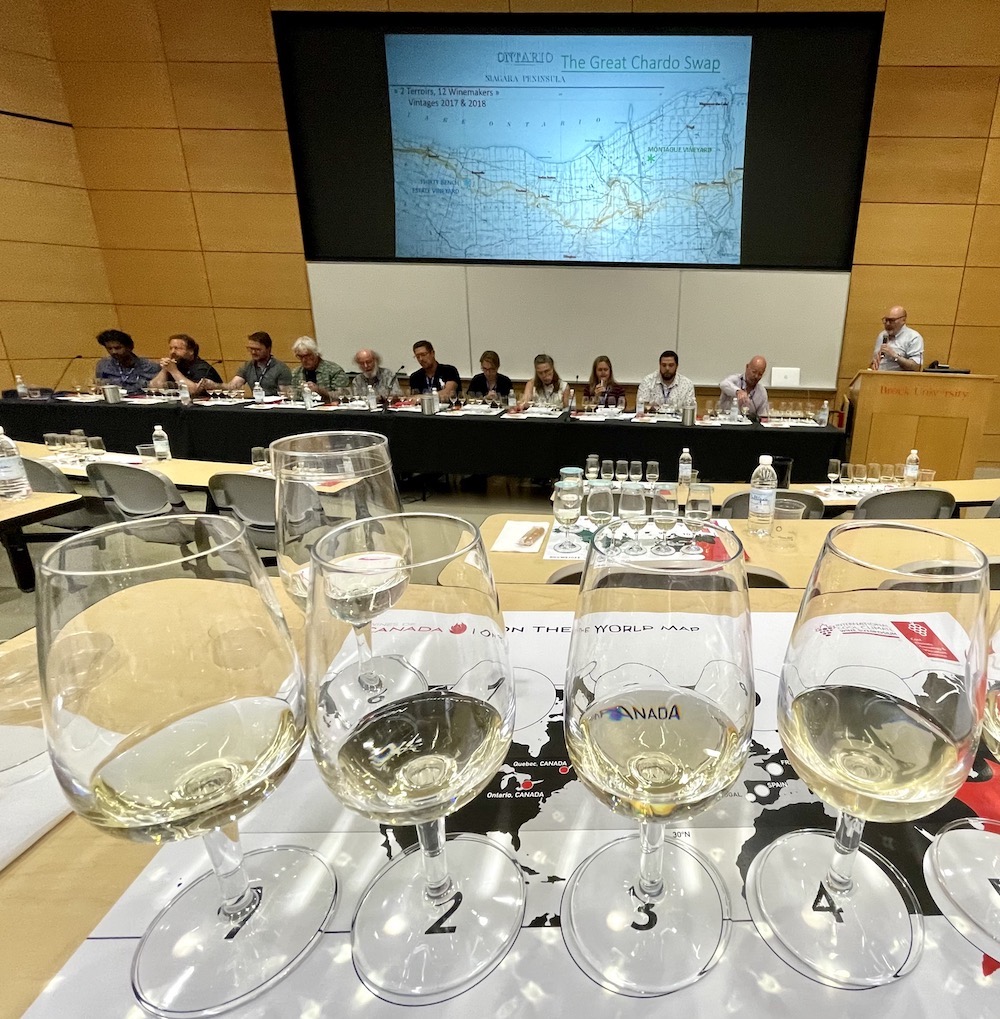
The concept saw a dozen Niagara winemakers from east and west of the Welland Canal swap grapes to make Chardonnay from two vineyards — one on the Beamsville Bench, the other in Niagara-on-the-Lake. Six Bench winemakers crafted the NOTL wines, while the six NOTL winemakers made the Bench Chardonnay. Beyond using the same juice, closures and bottles, winemakers had free rein to craft their wines however they deemed fit. Adding another layer, due to COVID and the postponement of the event, winemakers made two vintages — 2017 and 2018 — from the same vineyards.
Kemp said the Great Chardo Swap was developed as an innovative way to showcase various styles of Ontario’s most widely planted white vinifera grape, Chardonnay. “We wanted to do something that was uniquely Canadian, and we have such distinctive terroir here between the east and west sides of the canal,” said Kemp. “It is interesting to see if specific traits and flavours follow through from one vineyard, regardless of who is making the wine.”
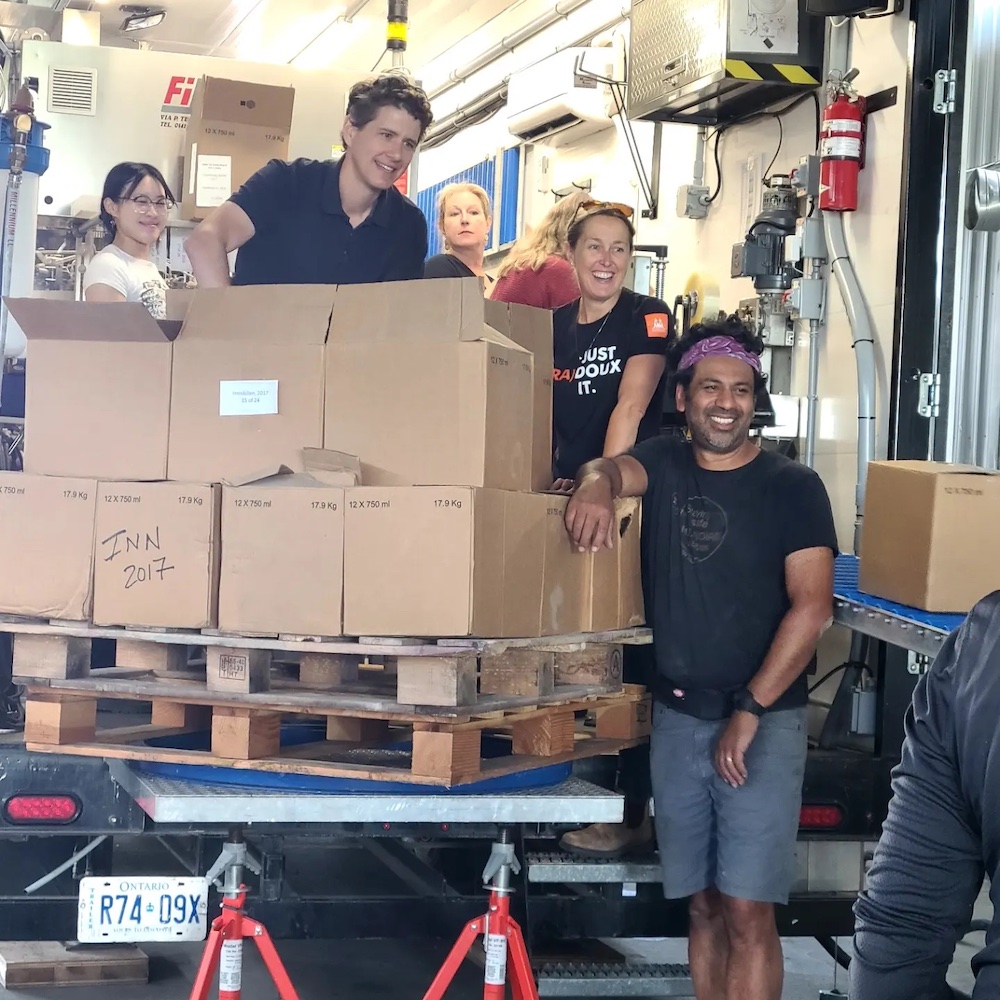
CCOVI Director Debbie Inglis said the institute is “thrilled, as always, to have had the opportunity to collaborate with industry partners … to develop and deliver educational sessions focused on exploring cool climate winemaking and viticulture.”
To view a behind the scenes video of this project, go here.
Eleven of the 12 winemakers (because of the passage of time, some winemakers didn’t make both wines) were at the tasting to discuss how they went about making wine from fruit they don’t normally handle. Not necessarily out of their comfort zone, but truly enlightening once we began tasting each winemaker’s take on terroir vs. style vs. vintage.
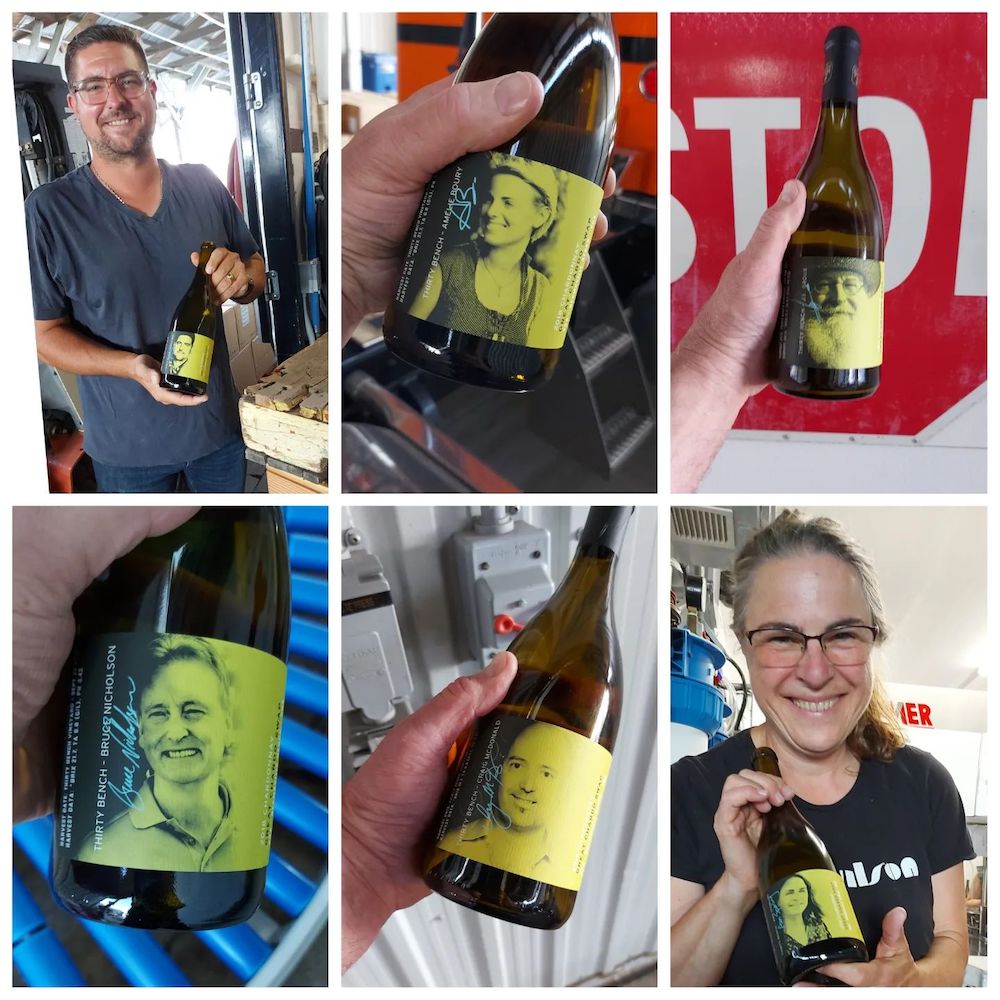 The East-side winemaking team consisted of:
The East-side winemaking team consisted of:
• Fabian Reis, Ferox by Fabian Reis
• J.L. Groux, Stratus Vineyards
• Ann Sperling, Southbrook Vineyards
• Amélie Boury, Château des Charmes
• Nicholas Gizuk, Inniskillin Wines
• Craig McDonald, Trius Winery
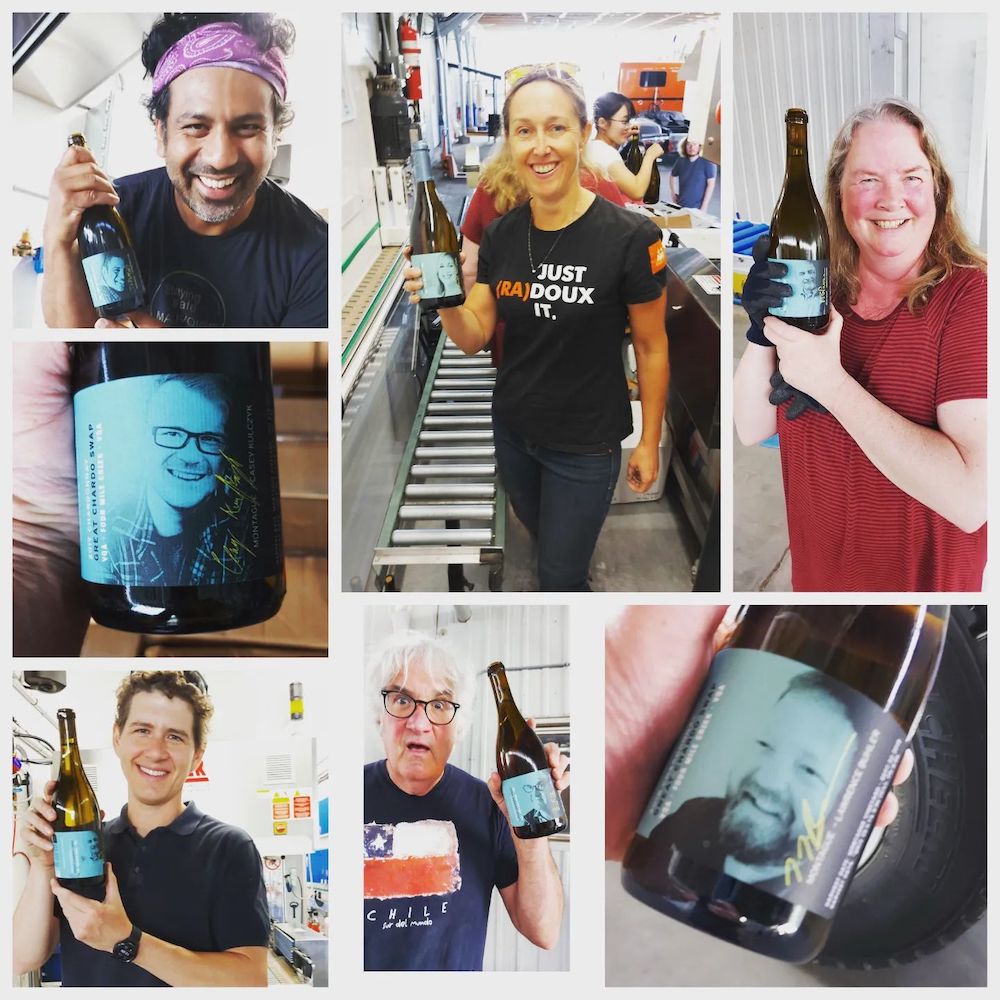 The West-side winemaking team consisted of:
The West-side winemaking team consisted of:
• Casey Kulczyk, Westcott Vineyards
• Emma Garner, Thirty Bench Wine Makers
• Angelo Pavan/Gabriel Demarco, Cave Spring Vineyard (neither in attendance at the tasting)
• Lawrence Buhler, Henry of Pelham Family Estate
• Shiraz Mottiar, Malivoire Wine Company
• Thomas Bachelder, Bachelder Wines, Le Clos
The Chardonnay grapes used to craft the wines were donated by Inniskillin from NOTL and Thirty Bench Wine Makers on the Bench.
The Great Chardo Swap wines from the 2017 and 2018 vintages are available online exclusively at the BarBea Wine Shop here. Mixed cases include one wine from each of the 12 winemakers. Shipping across Ontario is available. Proceeds will be donated to the Karl J. Kaiser Memorial Fund to establish scholarships for students studying oenology and viticulture at Brock.
A complicated tasting such as this, with 12 winemakers, two terroirs and two vintages, can quickly go off the rails. It took a while to figure out which wines were which, and which vintage was which, but once we got in the groove, it started to make perfect sense and the side by side comparison offered invaluable insight to at least address one important question — is it terroir or the winemaker that dictates the style of the wine?
Let’s first discuss the two vineyards.
Montague Vineyard
Montague is one of Niagara’s most historic vineyards. It was planted in 1979 by the founders of Inniskillin, Ontario’s first commercial since 1929 when it opened in 1975. The winery, located in the Four Mile Creek sub-appellation, was founded by Donald Ziraldo and Karl Kaiser and was formerly the farm which was owned by Colonel Cooper in the 1800s and was named for his Irish Regiment, the Inniskilling Fusiliers.
Winemaker Nicholas Gizuk explained that the fruit for the Great Chard Swap was primarily from the 1993 planting with a bit from the original vines. The soil consists of silt, clay and loam and leans to the peachy side of the flavours.
Thirty Bench Vineyard
Winemaker Emma Garner said that the Peller Estates owned Thirty Bench Wine Makers estate Chardonnay tends to show more stony minerality and freshness. The grapes are sourced from the 2000 planting with steeper slopes, good air flow and drainage. Being tucked beneath the escarpment offers vineyards a longer season that allow grapes more time to ripen and cooler nights that help intensify flavours.
The wines
The 30 Bench Chardonnays from the Bench, made by NOTL winemakers, were up first. It was clear right out of the gate, that the style of the winemaker was driving the bus on these wines for the most part. Trius’s Craig McDonald’s take on the Bench was to offer a creamier style that showcased the ripe orchard fruits with added toasty spice. Texture was a key highlight. Ann Sperling, on the other hand, preferred a more subtle style, a leaner version and balanced approach that really shone a spotlight on the minerality of the Beamsville Bench.
McDonald commented that the “interpretation of the vintage really defines Niagara. Winemaker, terroir, vintage — the trifecta.”
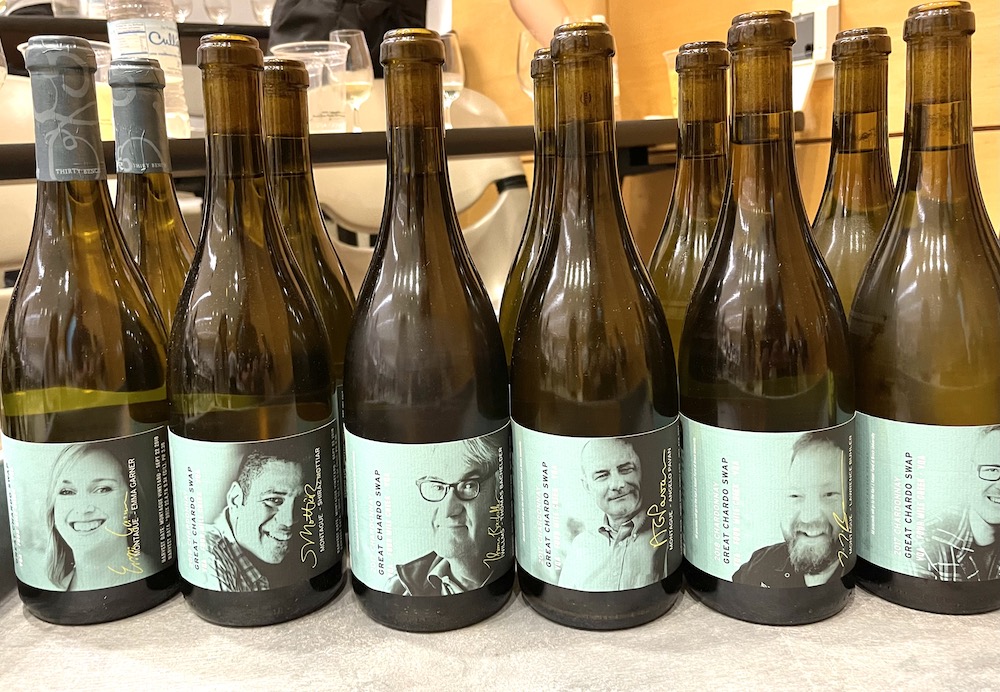
Former Inniskillin winemaker Bruce Nicholson also stayed with what he knows best and made a richer, stone fruit laden and spicy example of the Bench, choosing 100% barrel fermentation and aging with no wild yeasts.
The 2017s were starting to show a pattern — much more complex and ripe, while the 2018s were subtler, more minerally and finessed. But, Stratus winemaker J-L Groux really threw any pre-conceived notions that the winemaker’s style merely plays a minor role on its heels. First all, his cloudy version of the Bench Chardonnay was the outlier in the tasting and fooled no one in the room that it wasn’t his. His bottled-on-the-lees style, what he calls “the tradition of the future,” is all about winemaker preference and less about where the fruit came from. It was minerally, yes, but perfectly balanced with stone fruits, saline, leesy notes and integrated spice notes. “The pleasure of making wine,” he said, “is going from surprise to surprise.”
When it came time to taste the Montague Chardonnays made by the Bench winemakers, I was more and more convinced that the winemaker has the most profound impact on the wine, followed by terroir, then vintage. Thomas Bachelder was first up with his take on Montague, which he started by saying: “I started with a big, big love for Montague Vineyard.”
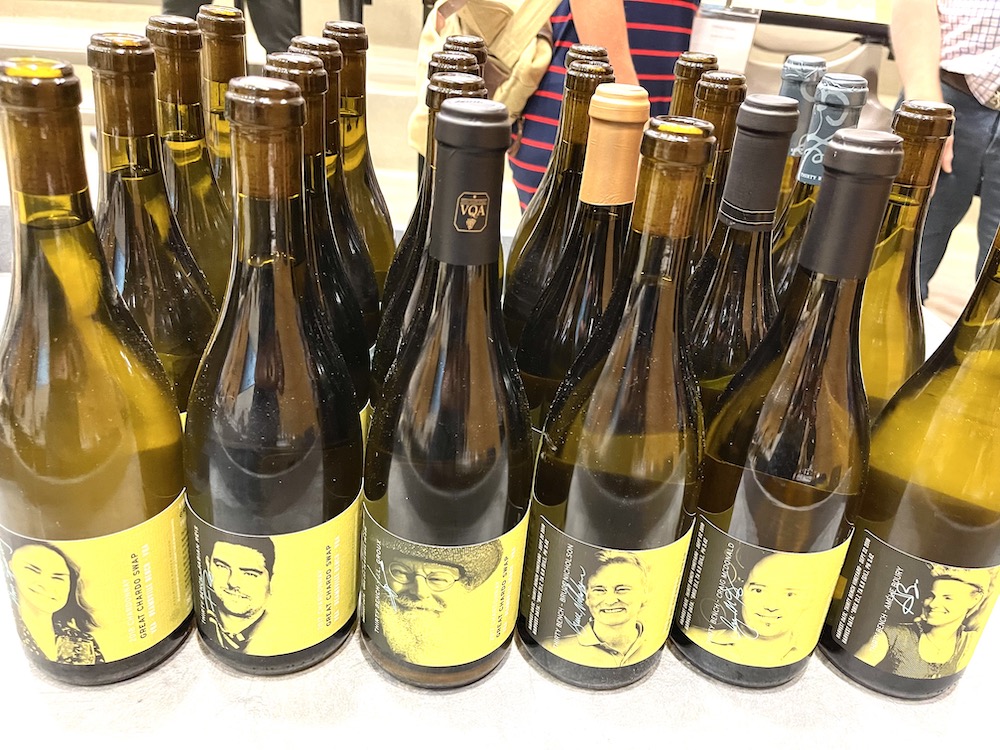
His 2017 version of Montague was actually from his own collection of single-vineyard wines, which offered a bit of levity at the tasting. Bachelder juggles a lot of barrels where he makes his wine, so it was no surprise that one got mixed up. But his 2018 version was spot-on Bachelder style — a deft touch with oak, subtle reductive note, finessed yet retaining the riper style of NOTL. It was vibrant but juicy with just a hint at flinty minerality (not often found in NOTL Chards).
Henry of Pelham winemaker Lawrence Buhler did not make the 2017 Montague, which was rich, perfumed, ripe and fairly robust with lavish spices, but his 2018 was much more subtle and fresh with prefect balance, poise and finesse on the finish.
30 Bench Wine Maker’s Emma Garner produced a rich and layered 2017 “Monty” with baked pear/apple and spice, while the 2018 was completely different in a more reductive, savoury sense with ripe stone fruits, oak in check and a seductive, balanced, and finessed approach on the finish. Quite lovely.
Another winemaker that made up my mind that the person, or style, is key to any wine, was Malivoire’s Shiraz Mottiar. His approach was “let’s make this really simple,” which is easy to say and harder to do. His 2017 was the most elegant version of the Monty, which showed with the most minerality of all the NOTL wines and displayed lovely texture and freshness on the finish. For the 2018 version he blocked the malo, achieved low abv (12% because “that’s what I like to drink”), and created another texturally beautiful Chardonnay. “I wanted to showcase what the fruit really was,” he said.
Mission accomplished and bravo to to all for this impressive experiment.






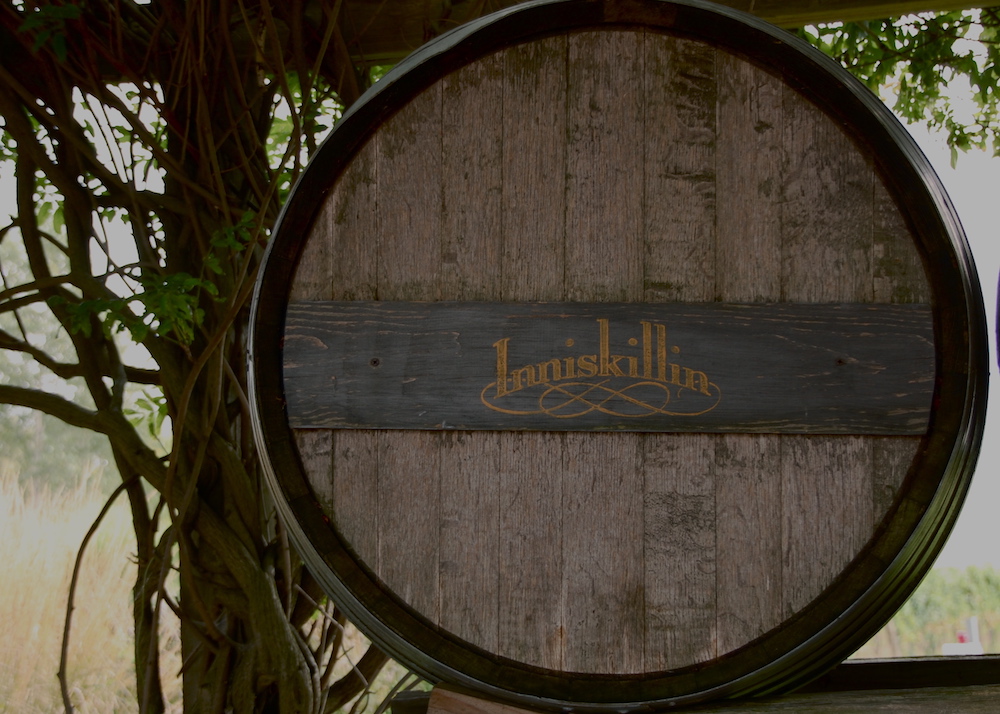

Comment here